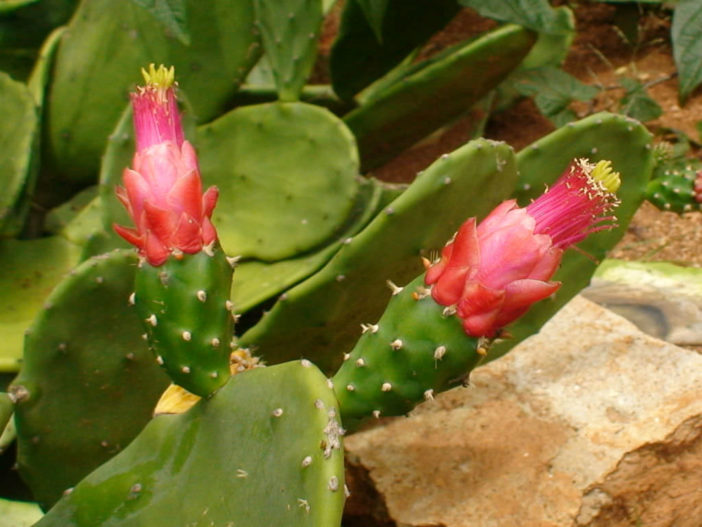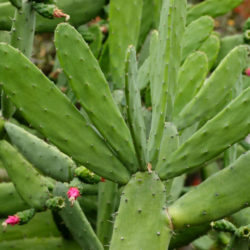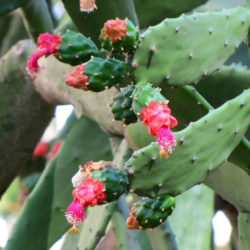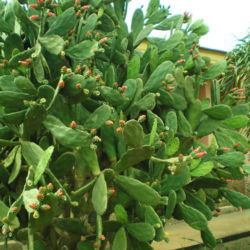Scientific Name
Opuntia cochenillifera (L.) Mill.
Common Name(s)
Cochineal Cactus, Cochineal Nopal Cactus, Cochineal Opuntia, Nopal Cactus, Prickly Pear
Synonym(s)
Cactus cochenillifer, Nopalea cochenillifera
Scientific Classification
Family: Cactaceae
Subfamily: Opuntioideae
Tribe: Opuntieae
Genus: Opuntia
Description
Opuntia cochenillifera, also known as Nopalea cochenillifera, is a shrubby or treelike cactus with a broadly cylindrical trunk and branches composed of elliptic to narrowly obovate joints. It can grow up to 13.1 feet (4 m) tall, with the trunk reaching up to 8 inches (20 cm) in diameter. The stem segments are green with small white wooly areoles without spines or nearly so, measuring up to 20 inches (50 cm) long and 6 inches (15 cm) wide.
The pink to deep red flowers appear at the top of the uppermost joints, usually in winter. They are erect, up to 2.8 inches (7 cm) long and 0.6 inches (1.5 cm) in diameter, and composed of many tepals and crowded pink filaments and white style that are much longer than tepals. The fruits ellipsoid with well-distributed areoles, up to 1.6 inches (1.4 cm) long and 1 inch (2.5 cm) in diameter, and contain tiny tan to gray seeds.
Origin
Opuntia cochenillifera may have been endemic to Mexico but is widely cultivated and escaped in the West Indies and tropical America.

Hardiness
USDA hardiness zones 9a to 11b: from 20 °F (−6.7 °C) to 50 °F (+10 °C).
How to Grow and Care
Though the large variety of species within the Opuntia genus means different, Prickly Pears may need slightly different care. All are desert cacti that need lots of sun, lots of light, and very little water. If you live in a hot, arid area, these plants can generally be planted outside, left alone, and enjoyed.
These cacti will grow just fine in a garden but can also be grown in pots. To repot, ensure the soil is dry, remove the pot, and remove the old soil. After treating any cuts with fungicide, place the cactus in a new pot and backfill it with potting soil. As with a new cutting, ensure not to water a newly repotting Prickly Pear for a brief period to avoid rotting its roots.
Opuntia can propagate either by cuttings or by seed. To propagate by cuttings, sever pads from a plant and let them dry so that the wounds heal. Then, place the plants in dry soil and refrain from watering them until they begin to grow to avoid rotting them.
See more at How to Grow and Care for Opuntia.
Forms
Links
- Back to genus Opuntia
- Succupedia: Browse succulents by Scientific Name, Common Name, Genus, Family, USDA Hardiness Zone, Origin, or cacti by Genus
Photo Gallery
Click on a photo to see a larger version.


